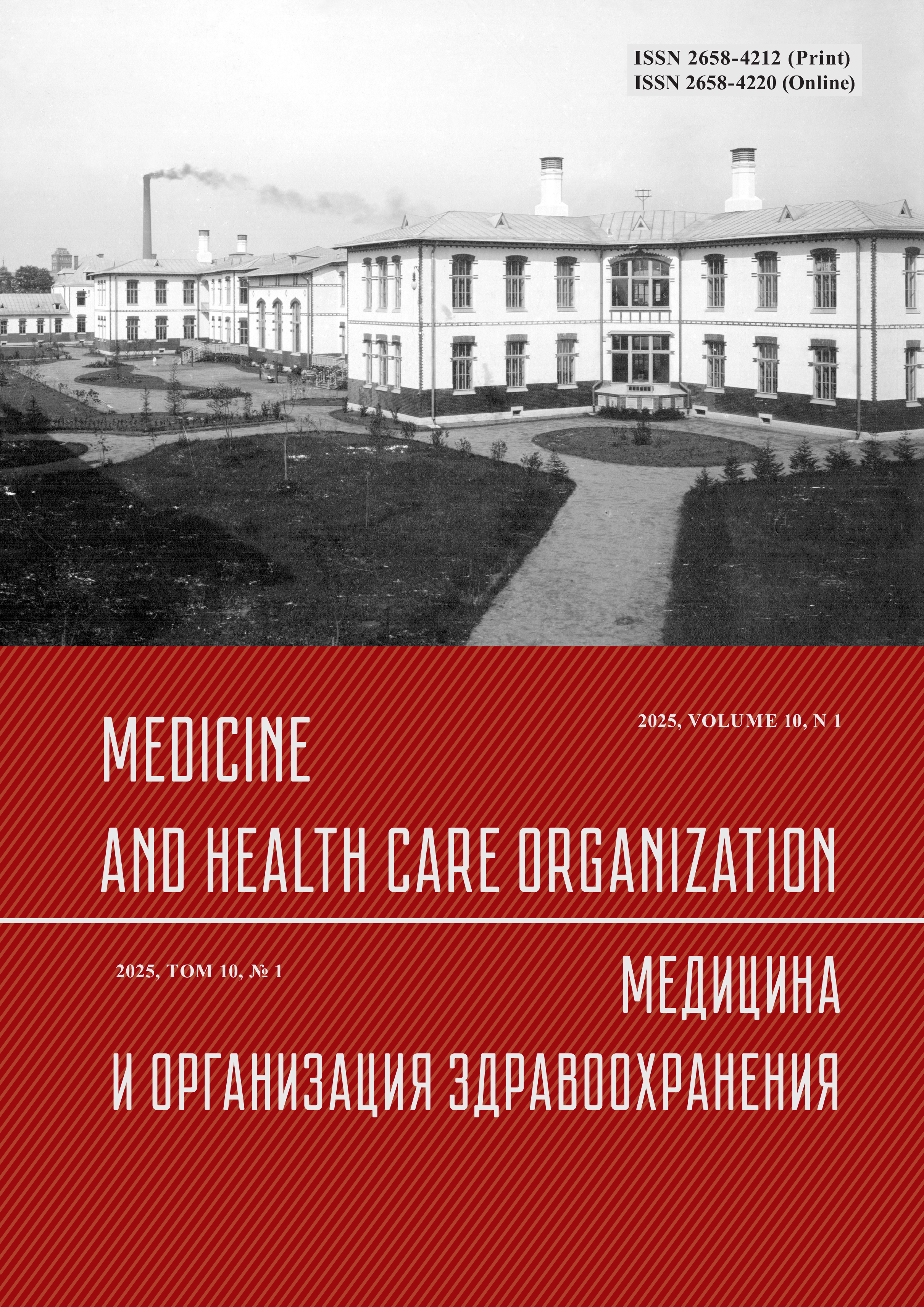Organization of a system for microbiological monitoring and antimicrobial resistance in a multidisciplinary hospital
Abstract
Healthcare-associated infections (HAI) are one of the most pressing problems facing modern medicine. One of the elements of organization of control of HAI in hospital is microbiological monitoring and assessment of antimicrobial resistance of strains isolated from patients. Of particular concern is the high prevalence of Klebsiella pneumoniae strains. These strains frequently cause urinary tract infections, pneumonia and have multiple resistance to antibacterial drugs. In this regard, the aim of the study is to evaluate the organization of the microbiological monitoring system to improve the internal system of epidemiological safety and control of UTIs in hospitals. In this article, a retrospective analysis of the results of microbiological monitoring of two hospitals in the city of St. Petersburg, carried out in the period from May to October 2024, is carried out. The results of the study confirm the high epidemiologic significance of the group of ESCAPE-pathogens, in particular Klebsiella pneumoniae, and demonstrate their pronounced resistance to antibiotics compared to other relevant strains. The necessity of regular microbiological monitoring for timely correction of empirical therapy protocols, early prescription of rational antibiotic therapy and prevention of the spread of antibiotic-resistant strains in medical institutions was substantiated.
References
Guoying W., Guo Z., Xiaoyu C., Longxiang X., Hongju W. The Characteristic of Virulence, Biofilm and Antibiotic Resistance of Klebsiella pneumoniae. Int J Environ Res Public Health. 2020;17(17):6278.
Чеботарь И.В., Бочарова Ю.А., Подопригора И.В., Шагин Д.А. Почему Klebsiella pneumoniae становится лидирующим оппортунистическим патогенном. Клиническая микробиология и антибактериальная химиотерапия. 2020;22:4–19.
Endimiani A., Depasquale J.M., Forero S. et al. Emergence of blaKPC-containing Klebsiella pneumoniae in a long-term acute care hospital: a new challenge to our healthcare system. J Antimicrob Chemother. 2009;64:1102–1110.
Clegg S., Murphy CN. Epidemiology and Virulence of Klebsiella pneumoniae, Microbiol Spectr. 2016;4(1): 1–17.
Paczosa M.K., Mecsas J. Klebsiella pneumoniae: Going on the Offense with a Strong Defense. Microbiol Mol Biol Rev. 2016;80(3):629–661.
Isler B., Aslan A.T., Akova M., Harris P. & Paterson D.L. Treatment strategies for OXA-48-like and NDM producing Klebsiella pneumoniae infections. Clinical Infectious Diseases. 2021;73(8):1389–1400.
Божкова С.А., Гордина Е.М., Шнейдер О.В., Рукина А.Н., Шабанова В.В. Резистентность продуцирующих карбапенемазы штаммов Klebsiella pneumoniae, выделенных от пациентов с ортопедической инфекцией. Клиническая микробиология и антибактериальная химиотерапия. 2020;22(1):47–52.
Giske C.G., Fröding I., Hasan C.M., Turlej-Rogacka A., Toleman M., Livermore D., Woodford N. & Walsh T.R. Diverse Sequence Types of Klebsiella pneumoniae Contribute to the Dissemination of blaNDM-1 in India, Sweden, and the United Kingdom. Journal of Antimicrobial Chemotherapy. 2021;76(8):1934–1942.
Denissen J., Reyneke B., Waso-Reyneke M., Havenga B., Barnard T., Khan S., Khan W. Prevalence of ESKAPE pathogens in the environment: Antibiotic resistance status, community-acquired infection and risk to human health. Int J Hyg Environ Health. 2022;244:11400.
Lapp Z., Crawford R., Miles-Jay A., Pirani A., Trick W.E., Weinstein R.A., Hayden M.K., Snitkin E.S., Lin M.Y. Regional Spread of blaNDM-1-Containing Klebsiella pneumoniae ST147 in Post-Acute Care Facilities. Clinical Infectious Diseases. 2021;73(8):1431–1438.
Hoj R.T., McNeely B., Webber K., Welling E., G Pitt W., C Ford L., Robison A.R. A pentaplex real-time PCR assay for rapid identification of major beta-lactamase genes KPC, NDM, CTX, CMY, and OXA-48 directly from bacteria in blood. J Med Microbiol. 2021;70(12):1–10.
Gao H., Liu Y., Wang R., Wang Q., Jin L., Wang H. The transferability and evolution of NDM-1 and KPC-2 co-producing Klebsiella pneumoniae from clinical settings. Journal of Global Antimicrobial Resistance. 2021;28:93–99.
Xiang T., Chen C., Wen J., Liu Y., Zhang Q., Cheng N., Wu X., Zhang W. Resistance of Klebsiella pneumoniae Strains Carrying blaNDM-1 Gene and the Genetic Environment of blaNDM–1. Microbial Drug Resistance. 2021;27(4):453–462.



